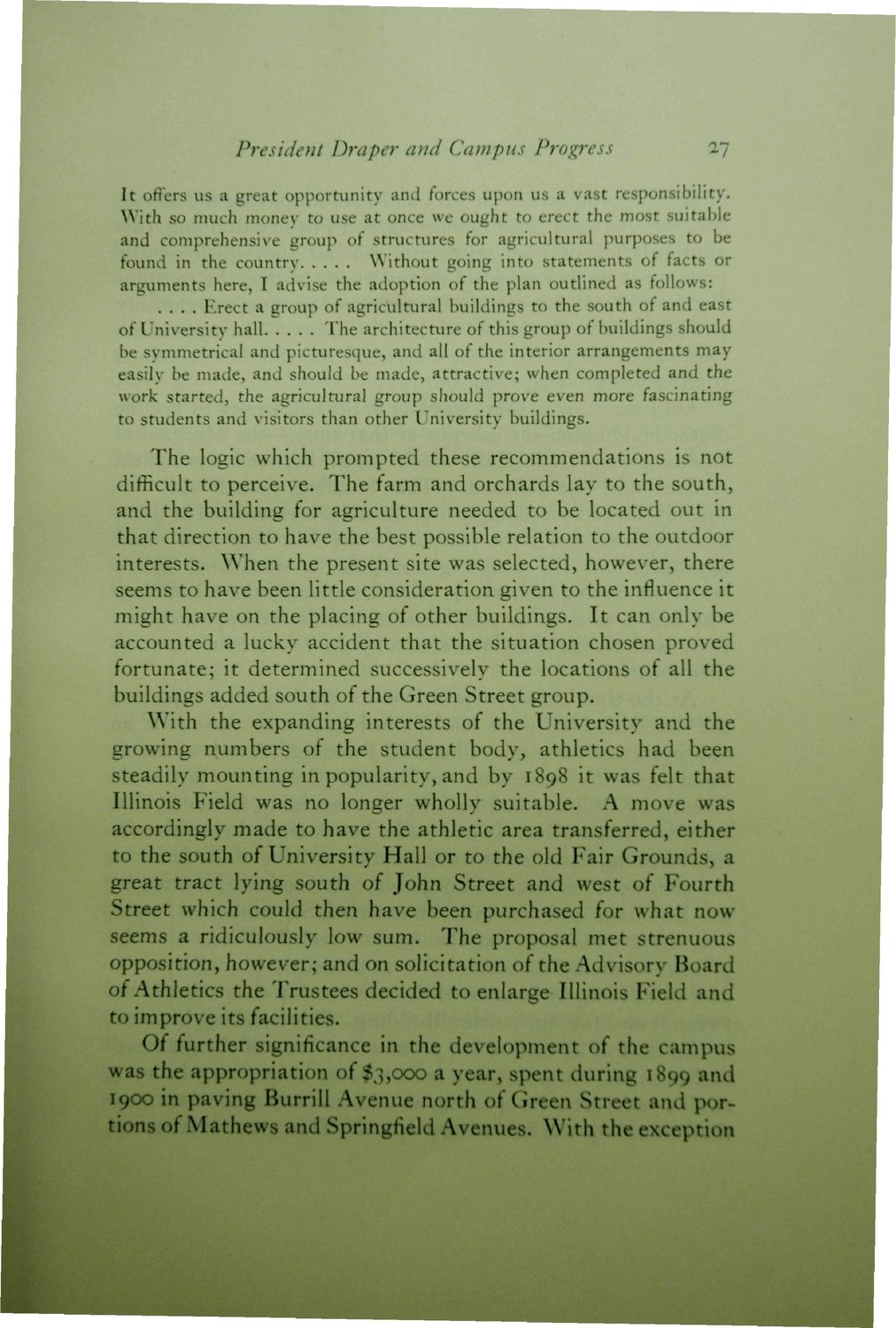| |
| |
Caption: Book - 30 Year Master Plan (Tilton & O'Donnell)
This is a reduced-resolution page image for fast online browsing.

EXTRACTED TEXT FROM PAGE:
President Draper and Campus Progress 27 It offers us a great opportunity and forces upon us a vast responsibility. With so much money to use at once we ought to erect the most suitable and comprehensive group of structures for agricultural purposes to be found in the country Without going into statements of facts or arguments here, I advise the adoption of the plan outlined as follows: . . . . Erect a group of agricultural buildings to the south of and east of University hall The architecture of this group of buildings should be symmetrical and picturesque, and all of the interior arrangements may easily be made, and should be made, attractive; when completed and the work started, the agricultural group should prove even more fascinating to students and visitors than other University buildings. The logic which prompted these recommendations is not difficult to perceive. The farm and orchards lay to the south, and the building for agriculture needed to be located out in that direction to have the best possible relation to the outdoor interests. When the present site was selected, however, there seems to have been little consideration given to the influence it might have on the placing of other buildings. I t can only be accounted a lucky accident that the situation chosen proved fortunate; it determined successively the locations of all the buildings added south of the Green Street group. With the expanding interests of the University and the growing numbers of the student body, athletics had been steadily mounting in popularity, and by 1898 it was felt that Illinois Field was no longer wholly suitable. A move was accordingly made to have the athletic area transferred, either to the south of University Hall or to the old Fair Grounds, a great tract lying south of John Street and west of Fourth Street which could then have been purchased for what now seems a ridiculously low sum. The proposal met strenuous opposition, however; and on solicitation of the Advisory Board of Athletics the Trustees decided to enlarge Illinois Field and to improve its facilities. Of further significance in the development of the campus was the appropriation of $3,000 a year, spent during 1899 and 1900 in paving Burrill Avenue north of Green Street and portions of Mathews and Springfield Avenues. With the exception
| |